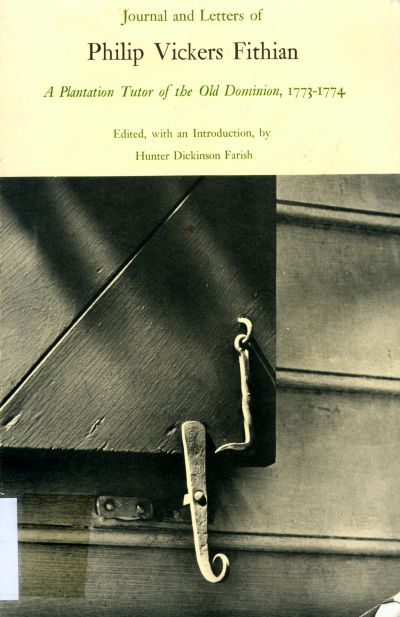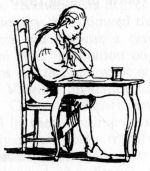Transcriber's note:
Archaic spelling and variations in spelling, punctuation and hyphenation have beenretained except for those listed at the end of the book.

Journal & Letters of
Philip Vickers Fithian
1773-1774:
A Plantation Tutor of the
Old Dominion

EDITED, WITH AN INTRODUCTION, BY
HUNTER DICKINSON FARISH;
ILLUSTRATED BY FRITZ KREDEL
The University Press of Virginia
Charlottesville
COPYRIGHT 1957 BY COLONIAL WILLIAMSBURG, INCORPORATED
Previous editions copyright 1943, 1945
by Colonial Williamsburg, Incorporated
ALL RIGHTS RESERVED
Library of Congress Catalogue Card Number 57-13498
The University Press of Virginia
First printing for Dominion Books
October 1968
Fourth printing 1990
Printed in the United States of America
Preface
Once in a great while historians find a firsthand account that providesstriking insight into a past era. Only rarely is such a documentwritten with the perception and charm that make its readers feelas if they had participated in the incidents described and sharedthe experiences related. The journal and relevant correspondence ofPhilip Fithian constitute this kind of source.
Fithian was reared in New Jersey and attended the College ofNew Jersey in Princeton, receiving his degree in 1772. Before enteringthe Presbyterian ministry, he followed the advice of PresidentWitherspoon of Princeton and became a tutor in the family ofRobert Carter at "Nomini Hall" plantation on the Northern Neckof Virginia. The reactions of the somewhat austere young man tothe rich, warm life of a Virginia plantation are always instructiveand often amusing. The Carters and their seven children were afascinating family, liberal in their sentiments and deeply interestedin books and music. Fithian sets forth truthfully, yet with livelytouches, the family's assessments of the society in which it moved,the institution of slavery, and the dispute developing with themother country. Throughout his experiences Fithian remained trueto his "fair Laura"—Elizabeth Beatty in far off New Jersey.
The journal, with certain of the letters, was first published in1900, in somewhat abbreviated form, by the Princeton HistoricalAssociation. Dr. Hunter Dickinson Farish, in his edition of TheJournal and Letters of Philip Vickers Fithian (Williamsburg RestorationHistorical Studies, III; Williamsburg, Va., 1943), includedthe complete journal, added other relevant letters as well as Fithian'scatalogue of Carter's library, and supplied a thoughtful Introduction.
Dr. Farish was Director of Research at Colonial Williamsburgfrom 1937 until ill health forced him to retire in 1944. He broadenedthe program there by bringing young research associates to the[viii]staff, making grants-in-aid to scholars in the field of early Americanhistory, and establishing and editing the Williamsburg RestorationHistorical Series. He also taught at the College of William andMary and helped to work out the organizational plans for the Instituteof Early Ame